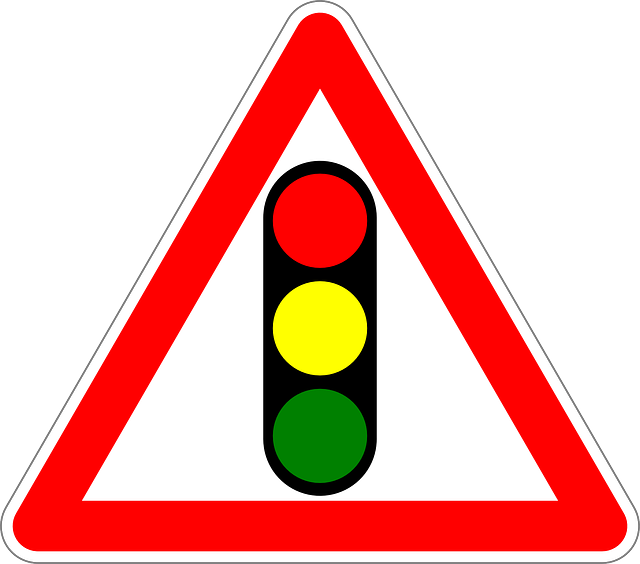Organic traffic is crucial for website success, driving brand awareness and user engagement through natural search results. To maximize its potential, businesses must analyze key metrics like CTRs, average position, bounce rates, session duration, and keyword rankings using tools like Google Analytics and SEMrush. Understanding user behavior patterns helps optimize content strategy and personalize experiences. Competitive analysis identifies industry trends and market gaps, refining SEO tactics. By combining data-driven insights with website optimization, businesses can attract, retain, and convert more organic traffic visitors, ultimately boosting online success.
Organic traffic, driven by search engine optimisation (SEO), is vital for any website’s success. Understanding and analyzing this traffic allows businesses to refine their digital strategies, attract more visitors, and ultimately boost conversions. This article delves into the intricacies of organic traffic analysis, covering key metrics, content identification, user behavior insights, competitive benchmarking, and optimisation techniques. By employing these tactics, you can harness the power of organic search to drive meaningful growth.
Understanding Organic Traffic: Definition and Importance

Organic traffic refers to visitors who come to your website from natural search engine results, rather than paid advertisements. It’s crucial for understanding your website’s reach and effectiveness in attracting an audience interested in your content. By analyzing organic traffic, businesses can gain insights into their target market, optimize their SEO strategies, and ultimately drive more qualified leads.
The importance of organic traffic lies in its potential to build brand awareness, enhance online visibility, and foster long-term customer relationships. Organic search results are often perceived as more trustworthy and relevant by users, leading to higher conversion rates and improved user engagement. Therefore, investing time and resources in optimizing for organic traffic is essential for any website aiming to achieve sustained success in the digital landscape.
Measuring the Success of Organic Search Strategies

Measuring the success of organic search strategies is a pivotal aspect of understanding and optimizing your online presence. By tracking key performance indicators (KPIs) such as click-through rates (CTRs), average position, and bounce rate, businesses can gain valuable insights into what’s working and what needs improvement in their SEO efforts. Organic traffic, driven by relevant keywords and high-quality content, should not only increase but also contribute to higher user engagement and lower exit rates.
Effective analysis involves regular monitoring of search engine rankings for targeted keywords, analyzing the behavior of website visitors through heatmaps and session recordings, and evaluating conversion rates across different marketing channels. This data-driven approach allows marketers to refine their strategies, ensuring that organic traffic not only grows but also translates into meaningful actions and business value.
Key Metrics to Analyze for Organic Traffic

When analyzing organic traffic, understanding key metrics is essential for gauging performance and making data-driven decisions. Among these, session duration offers insights into how engaged visitors are with your content, while bounce rate indicates the percentage of visitors leaving after viewing only one page. Both directly correlate to user experience and content relevance.
Other crucial metrics include pages per session, which reveals average visitor interaction levels, and source/referral traffic, providing valuable context on where your audience is coming from. By tracking these metrics, you can identify high-performing content, pinpoint areas for improvement, and optimize strategies to attract and retain more organic traffic over time.
Identifying Top Performing Content and Keywords

Identifying top-performing content and keywords is a crucial step in understanding your audience and optimizing your website for organic traffic. By analyzing which articles, blog posts, or product pages consistently attract visitors, you can gain valuable insights into user preferences and search trends. Tools like Google Analytics provide detailed metrics on page views, bounce rates, and time spent, helping you pinpoint the most engaging content.
Furthermore, keyword research tools enable you to uncover the terms and phrases that drive organic traffic to your site. These tools show popular search queries related to your industry, allowing you to tailor your content strategy accordingly. Incorporating these keywords naturally into your writing not only improves search engine rankings but also enhances user experience, as visitors are more likely to find relevant information more easily.
Uncovering User Behavior Patterns

Uncovering user behavior patterns is a critical aspect of organic traffic analysis, offering valuable insights into how visitors interact with your website or online platform. By employing advanced analytics tools, businesses can track and interpret user journeys, enabling them to make data-driven decisions that enhance overall user experience. This process involves studying metrics such as click rates, time spent on pages, bounce rates, and conversion paths to identify trends and preferences.
For instance, analyzing organic traffic patterns can reveal which content resonates most with your audience, helping you optimize your website’s structure and content strategy accordingly. Moreover, understanding user behavior allows for the creation of personalized experiences, increasing engagement and the likelihood of conversions or subscriptions. Ultimately, by leveraging these insights, businesses can refine their marketing strategies, cater to their target demographics more effectively, and ultimately drive better results from their organic traffic sources.
Competitive Analysis: Benchmarking Against Competitors

Competitive analysis is a crucial aspect of understanding your position in the market and identifying strategies to boost organic traffic. By benchmarking against competitors, businesses can gain valuable insights into what works and what doesn’t in terms of SEO and content marketing. Tools like Google Analytics and SEMrush allow for an in-depth look at competitors’ website performance, keyword rankings, and backlink profiles.
This analysis reveals the tactics that rivals are employing to attract organic traffic, highlighting successful strategies that can be replicated or improved upon. It’s essential to not only focus on direct competitors but also on industry leaders and relevant niche players. By doing so, businesses can identify gaps in the market, create more effective content, and ultimately enhance their own organic reach.
Tools and Techniques for Effective Organic Traffic Analysis

Analyzing organic traffic is a critical aspect of understanding website performance and user engagement, especially in today’s digital landscape where online visibility is key. There are numerous tools and techniques available to decipher this intricate data. Google Analytics stands out as an indispensable asset, offering detailed insights into visitor behavior, including demographics, interests, and the sources driving the most valuable organic traffic. By segmenting audiences and tracking conversion rates, businesses can tailor their strategies to meet specific user needs.
Beyond analytics platforms, advanced techniques such as keyword research using tools like SEMrush or Ahrefs provide critical information about search terms that bring visitors to a site. This allows marketers to optimize content for relevant keywords, thereby improving organic rankings and attracting more high-quality traffic. Additionally, backlink analysis tools help identify the websites linking to yours, which can impact your domain authority and search engine visibility. These combined strategies offer a comprehensive approach to mastering organic traffic analysis, enabling businesses to make data-driven decisions and stay ahead in their industry.
Optimizing Your Website and Content Strategy

To maximize your website’s potential for driving organic traffic, optimizing both your site and content strategy is paramount. This involves ensuring your website is user-friendly, fast-loading, mobile-responsive, and equipped with clear navigation. Implement structured data markup to help search engines better understand your content, resulting in improved visibility on results pages. Regularly update your site with high-quality, keyword-rich content that provides value to your audience, addressing their queries and needs.
Content strategy should align with your target audience’s preferences and behaviors. Conduct thorough keyword research to identify terms relevant to your niche, incorporating them naturally into your content. Optimize meta titles and descriptions for searchability while crafting compelling calls-to-action that encourage user engagement and interaction. By combining these tactics, you’ll enhance your website’s authority and appeal to organic traffic sources, ultimately driving more qualified visitors to your site.
